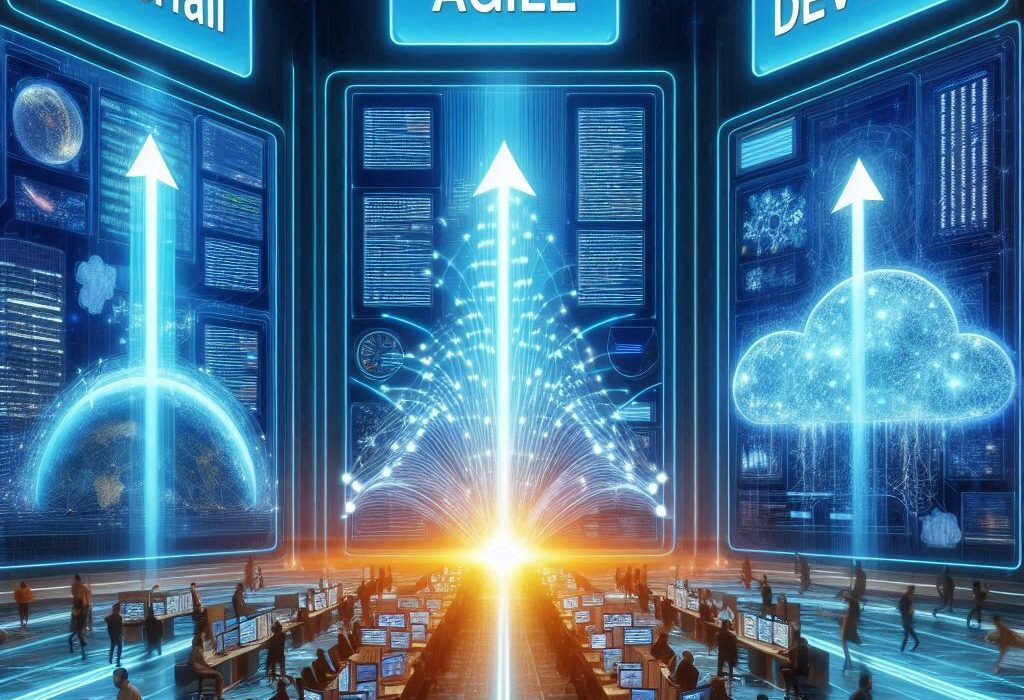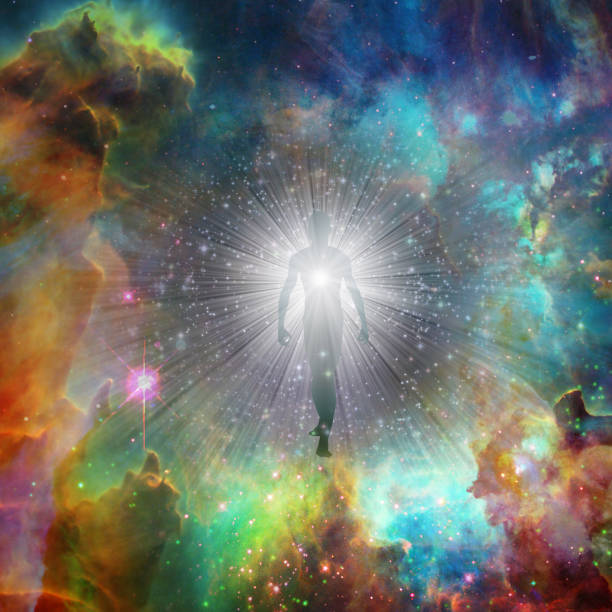Space—the silent, infinite expanse that has always whispered to humanity’s imagination—is no longer beyond our understanding. We have always looked up at the stars and wondered who or what else might be out there. For centuries, we’ve built telescopes, launched rockets, and sent signals into the unknown. Yet, despite all our efforts, space remained a vast mystery—too large, too complex, too distant for human minds alone to fully comprehend.
That is, until now.
Artificial Intelligence has become our new cosmic partner. It doesn’t tire, it doesn’t blink, and it can see patterns in data that would take humans lifetimes to recognize. AI has revolutionized how we explore the universe—from analyzing telescope data and piloting rovers on alien worlds to predicting solar storms and even designing future spacecraft.
This is the dawn of the AI-driven space age—a time when machines not only help us reach the stars but understand them. Here are the 15 most impressive and inspiring uses of AI in space exploration, each a chapter in humanity’s growing alliance with synthetic intelligence among the stars.
1. AI Piloting on Mars: The Autonomous Rovers
When NASA’s rovers—Curiosity and Perseverance—landed on Mars, they carried more than scientific instruments. They carried intelligence. These robotic explorers are not merely remote-controlled vehicles; they are partially autonomous scientists, guided by artificial intelligence that helps them navigate and analyze the alien landscape.
Every day on Mars brings unpredictable terrain, dust storms, and communication delays. A single command from Earth can take up to 20 minutes to reach the rover, making real-time control impossible. This is where AI steps in.
Perseverance’s navigation system, AutoNav, uses machine learning algorithms to identify obstacles, select the safest paths, and even prioritize exploration targets. It can analyze images from its cameras, detect rocks or cliffs, and decide how to avoid them—all without waiting for human input.
This independence allows it to travel faster and farther, capturing stunning images and conducting experiments that would be impossible if humans had to control every move.
AI has turned these rovers from obedient robots into explorers—machines capable of curiosity.
2. Analyzing Cosmic Data: AI and the Endless Sky
Every night, telescopes around the world collect an avalanche of data—terabytes upon terabytes of images, light curves, and signals from deep space. It’s far too much for humans to process. Without AI, most of the universe’s secrets would remain hidden in plain sight.
Astronomers now rely on machine learning algorithms to analyze this immense flood of information. Tools like Google’s AI for Astronomy and NASA’s Frontier Development Lab have been trained to spot anomalies and patterns in telescope data—stars that dim mysteriously, galaxies that defy categorization, or objects that move just a little too strangely.
One of AI’s great achievements came when it helped identify new exoplanets—worlds orbiting distant stars—by scanning subtle light fluctuations in data from the Kepler Space Telescope. AI can detect these patterns more accurately and efficiently than any human team, uncovering planets that might otherwise have gone unnoticed.
By giving AI the power to “see” the universe, we’ve opened our eyes wider than ever before.
3. Predicting Space Weather: AI vs. the Solar Storms
Our Sun is a magnificent yet unpredictable star. It flares, it pulses, and occasionally, it erupts in titanic explosions that hurl charged particles across the solar system. When these solar storms hit Earth, they can disrupt satellites, knock out power grids, and endanger astronauts.
To protect both our technology and our species, scientists have turned to AI. Neural networks now analyze data from solar observatories to forecast solar flares and coronal mass ejections hours—or even days—in advance.
The NASA Frontier Development Lab has developed AI systems that learn from years of solar data, recognizing the warning signs of an impending eruption. These models can predict when and where a flare will occur with increasing accuracy, giving Earth valuable time to prepare.
In essence, AI is becoming our cosmic weather forecaster—a digital guardian standing between humanity and the fury of the Sun.
4. Spacecraft Navigation and Autonomy
Deep-space missions face a daunting challenge: distance. The farther a spacecraft travels, the longer it takes for its signals to reach Earth. By the time mission control receives data and sends back instructions, the craft might already be millions of kilometers away from its last known position.
To overcome this, engineers have given spacecraft a measure of self-reliance through AI. Autonomous navigation systems like NASA’s Deep Space 1 and ESA’s Rosetta probe used artificial intelligence to make real-time adjustments during their missions.
For instance, Deep Space 1 employed an AI software system called Remote Agent, which could plan, diagnose, and repair itself mid-mission. It once reconfigured its thrusters without human intervention—a small act that saved the mission and proved AI’s worth in the void.
Future missions, like those to the outer planets or interstellar space, will depend on AI-guided navigation. These systems will learn, adapt, and even improvise when faced with the unknown.
AI, in this sense, is the new cosmic pilot—charting paths where no human has ever gone.
5. AI in Spacecraft Design and Optimization
Before a rocket ever leaves the launch pad, AI is already shaping its destiny. Engineers are now using machine learning and generative design algorithms to build smarter, lighter, and more efficient spacecraft.
AI can simulate thousands of design variations in minutes, optimizing everything from fuel efficiency to structural strength. NASA has used AI-driven design systems to create parts with unique, organic shapes—lighter and stronger than anything built by human intuition alone.
For example, SpaceX uses AI to optimize flight trajectories and engine performance. Its Falcon rockets rely on neural networks to adjust in real time during takeoff and landing.
In the near future, spacecraft might be designed entirely by AI—constructed from materials selected and shaped by algorithms that understand physics in ways humans cannot.
AI is not just a passenger on the journey to space—it’s the architect.
6. Exoplanet Discovery and Classification
The universe is teeming with worlds—some hot and violent, others icy and barren, and a few that might, just might, resemble Earth. The search for exoplanets has become one of astronomy’s greatest quests, and AI is leading the way.
When NASA’s Kepler and TESS telescopes collected years of data on starlight, the challenge was to spot the faintest, most periodic dips in brightness—signatures of orbiting planets. AI was trained to recognize these patterns faster and more accurately than human astronomers.
In one remarkable discovery, Google’s AI identified two new exoplanets in Kepler’s data that humans had missed. These algorithms can now distinguish between genuine planets and false positives caused by stellar activity or noise.
AI is also being used to classify exoplanets by type—rocky, gaseous, or icy—and to estimate their potential habitability. One day, the first evidence of alien life may come not from a human’s telescope, but from an AI quietly analyzing light curves deep in a supercomputer’s memory.
7. Robotic Exploration Beyond Earth
AI has transformed robots into explorers capable of independent thought. On the Moon, Mars, and beyond, these intelligent machines act as our eyes, hands, and sometimes even our decision-makers.
NASA’s Perseverance rover uses AI not only to drive autonomously but also to analyze Martian soil and select promising rock samples. The VIPER rover, set to explore the Moon’s south pole, will rely on AI to identify regions likely to contain water ice.
Future missions to icy moons like Europa or Enceladus—worlds suspected of harboring subsurface oceans—will use AI-driven probes that can navigate treacherous terrain or dive beneath the ice without direct human control.
These explorers will make decisions in real time, guided by machine learning systems that interpret sensor data and prioritize scientific goals.
AI has turned robots from tools into pioneers, capable of facing the unknown with digital courage.
8. Managing Space Debris
Earth’s orbit is becoming crowded—and dangerous. Millions of fragments from defunct satellites, rocket stages, and collisions now swirl around our planet at deadly speeds. A single collision could trigger a chain reaction known as the Kessler Syndrome, making parts of orbit unusable for generations.
To prevent this catastrophe, AI is being used to track and predict the movement of orbital debris. Systems like the LeoLabs radar network use machine learning to map the position and trajectory of thousands of objects in real time.
AI can predict potential collisions, helping space agencies adjust satellite orbits before disaster strikes. It can even guide robotic cleanup missions designed to capture and deorbit debris.
In this way, AI serves as a vigilant space traffic controller—protecting our fragile window to the stars.
9. Astronaut Health and Support Systems
Human spaceflight pushes the limits of biology. In zero gravity, muscles weaken, bones lose density, and the mind struggles with isolation. To keep astronauts healthy, AI is becoming a vital partner in space medicine.
AI-driven diagnostic tools can analyze health data from sensors and predict potential medical issues before they become serious. Virtual assistants aboard spacecraft monitor heart rate, oxygen levels, and even emotional well-being.
NASA and IBM developed an AI companion named CIMON (Crew Interactive Mobile Companion), tested aboard the International Space Station. CIMON can converse with astronauts, answer questions, and provide technical support—all while recognizing voice tone and emotional state.
In deep space, where contact with Earth will be delayed by minutes or hours, such AI companions could become not just assistants but lifelines.
They’ll offer comfort, guidance, and human-like interaction—proof that even in the emptiness of space, we are never truly alone.
10. Enhancing Space Communication Networks
As our exploration expands, so must our communication systems. Deep-space missions require transmitting vast amounts of data across billions of kilometers. Traditional radio systems struggle with such distances and delays.
AI is now optimizing Deep Space Network (DSN) communication by predicting data traffic, adjusting frequencies, and managing signal timing. Machine learning models can detect and correct transmission errors automatically, preserving vital scientific data.
For future missions—like those to Mars or the outer planets—AI will manage entire networks of satellites, ensuring seamless communication across interplanetary distances.
In essence, AI will weave an invisible web of connectivity, a neural network stretching between worlds.
11. AI for Space Manufacturing and Construction
When humanity establishes bases on the Moon or Mars, we won’t have the luxury of bringing everything from Earth. We’ll need to build and repair using local resources—and AI will make that possible.
AI-controlled 3D printers and robotic builders can use lunar or Martian soil (regolith) to construct habitats, landing pads, and tools. These autonomous systems analyze terrain, adapt designs, and adjust material composition on the fly.
NASA and the European Space Agency are already testing such technologies, envisioning AI-managed colonies where machines prepare shelters long before humans arrive.
In the near future, our first homes beyond Earth may be designed, built, and maintained entirely by AI—a partnership between human imagination and machine precision.
12. AI in Space Telescopes and Imaging
Astronomy is as much about perception as discovery. Telescopes like Hubble, James Webb, and Euclid generate images filled with complexity and noise. AI now plays a crucial role in processing and enhancing these images, turning raw data into breathtaking windows on the universe.
Machine learning algorithms filter out distortions, sharpen details, and even reconstruct missing data from partial observations. For example, AI was instrumental in the Event Horizon Telescope’s historic first image of a black hole.
Future telescopes will incorporate AI directly into their operations, allowing them to adjust focus, detect transient events, and reorient toward unexpected phenomena in real time.
With AI’s help, our view of the universe is no longer static—it’s alive, adaptive, and ever-expanding.
13. AI-Driven Interplanetary Mission Planning
Planning a space mission involves millions of variables: orbital mechanics, fuel efficiency, weather patterns, gravitational influences, and countless risks. AI has become the ultimate mission strategist.
Machine learning systems can simulate thousands of trajectories and mission scenarios to find optimal flight paths. AI can balance safety, cost, and scientific value, often finding creative solutions that human planners might overlook.
NASA’s Evolutionary Mission Design uses AI to generate new mission concepts, such as trajectories that use gravitational slingshots to save fuel and time.
In this way, AI doesn’t just execute missions—it helps imagine them. It expands the boundaries of what’s possible in space exploration.
14. Searching for Extraterrestrial Intelligence (SETI)
The question “Are we alone?” remains one of humanity’s oldest and most profound. The SETI Institute and researchers worldwide now employ AI to listen to the cosmos for signs of intelligent life.
AI algorithms analyze radio signals from vast arrays of telescopes, filtering out human-made noise and natural phenomena to detect potential extraterrestrial patterns.
In 2023, an AI system detected eight previously unnoticed signals from distant stars—signals that had been buried in years of data. While not confirmed as alien in origin, they demonstrated how AI can revolutionize our search for life.
By learning what “normal” cosmic noise sounds like, AI can recognize the extraordinary. It’s our ear in the darkness, listening for another voice in the void.
15. The Future: AI and Human Co-Exploration
Perhaps the most exciting frontier is not AI replacing astronauts, but AI partnering with them. Future space missions will depend on collaboration between human intuition and machine intelligence.
Imagine landing on Mars with an AI co-pilot that maps terrain in real time, diagnoses equipment malfunctions, and even monitors your health and emotions. Imagine an AI system on a spaceship that learns your habits, comforts you during solitude, and helps you make decisions under stress.
As missions stretch farther into space—beyond Mars, toward the icy moons of Jupiter or even interstellar space—AI will serve as navigator, medic, engineer, and friend.
In this partnership, we will not merely explore space; we will expand the very definition of consciousness itself, merging organic and artificial intelligence in a shared quest for discovery.
A Symphony of Stars and Circuits
Artificial Intelligence has become the new language of exploration—a fusion of human curiosity and machine precision. Together, they form a cosmic symphony: data and dreams, logic and wonder.
Every time AI processes a telescope’s image, guides a rover’s wheel, or anticipates a solar storm, it deepens our relationship with the universe. It’s as if we’ve given our species new senses—eyes that see the invisible, ears that hear across galaxies, and minds that never sleep.
The stars have always been out there, waiting. Now, with AI as our guide, we are finally learning to listen, to see, and to understand.
The universe is vast, but not beyond reach. With the quiet intelligence of our machines beside us, we step forward—into the dark, into the unknown, into the light of new worlds yet to come.






